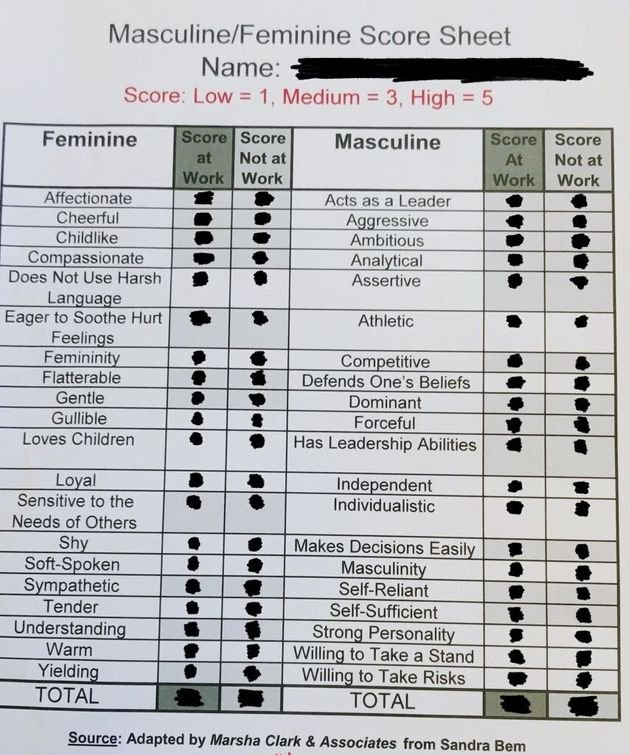It’s no secret that even today many workspaces have different standards of conduct for men and women, which have no practical reasoning but rather, are based on archaic and flawed perceptions.
At a time when it is imperative to change and improve working conditions to promote gender equality, a training course conducted at the consulting firm Ernst & Young focused on the opposite.

Ernst & Young giving women workplace training on “how to behave” is disappointing but not surprising. Too many companies would much rather focus on women staying quiet and tame so that their male counterparts can instead seem like the only intelligent people around.
— spooky sai 👻 (@Saisailu97) October 22, 2019
Feminie trait: “yielding”
— Don Moynihan (@donmoyn) October 22, 2019
Masculine trait: “forceful” and “dominant”
Ernst & Young training from 1955. (Just kidding, its from last year). https://t.co/FM6959OD2o
E&Y, that is counted among the ‘Big 4’ of consulting world, hosted a training seminar for its employees in Hoboken, New Jersey, in June 2018.
Conducted by an external vendor, the aim of the training– which was part of a leadership and empowerment seminar–was to advise participants on ‘how to be successful at EY’.

However, as per HuffPost, the training’s focus appeared to be on ‘fixing women’ to be a part of a male-dominated workspace. The purpose, in itself, is sexist, regressive, and not at all conducive to a progressive working environment.

Furthermore, as shared by an employee with HuffPost, the training focused on tactics and elements that female employees needed to keep in mind with respect to their male counterparts’ perceptions.
Beyond Belief: Ernst & Young training presentation told female executives they must wear “well cut attire that compliments their body shape”, their brains were 6% to 11% smaller than men’s, “sexuality scrambles the mind”.
— Prem Sikka (@premnsikka) October 23, 2019
And these firms advise others!https://t.co/9RlC3SxBWm
It did not talk about how flawed perceptions need to be altered, but rather put the impetus on women to handle ‘male sensibilities’, by stating points such as these:
1. Don’t directly confront men in the meetings, because men perceive this threatening. (Women do not). Meet before (or after) the meeting instead.2. If you’re having a conversation with a man, cross your legs and sit at an angle to him. Don’t talk to a man face-to-face. Men see that as threatening.3. Don’t be too aggressive or outspoken.

In fact, the participants were asked to rate themselves across a series of behavioral traits that were marked as ‘masculine’ and ‘feminine’.

Masculine traits included ‘aggressiveness, ambition’, etc. while female traits were focused on being ‘childlike’, appearing ‘cheerful’.
Not only does a gender-based division of behavioral traits exclude people who identify as genderqueer, but it also restricts every human being’s freedom of expression – because it lays down the expectation to behave a certain way, basis your biological gender.

It’s understandable that a professional working environment will have a specific code of conduct and dressing etiquette. But to hold men and women to different standards, basis their gender, or to favor one gender over the other, is not the kind of behavior that one would expect from corporate giants like E&Y in this day and age.

And yet, the presentation focused on how men and women are different by explicitly talking about their mental capabilities!
Personal favorite from the 2018 Ernst & Young training:
— Katie Hnida (@KatieHnida) October 22, 2019
Women’s brains absorb information like pancakes soak up syrup so it’s hard for them to focus. Men’s brains are more like waffles. They’re better able to focus because the information collects in each little waffle square.
As per reports, an E&Y spokesperson shared that the training is ‘no longer offered in its current form’. However, the need of the hour is to not just stop such practices, but to also include training modules that help people know better, and teach them to be more inclusive and fair in professional workspaces.
All images from HuffPost (Isabella Carapella/HuffPost), unless specified otherwise.

















